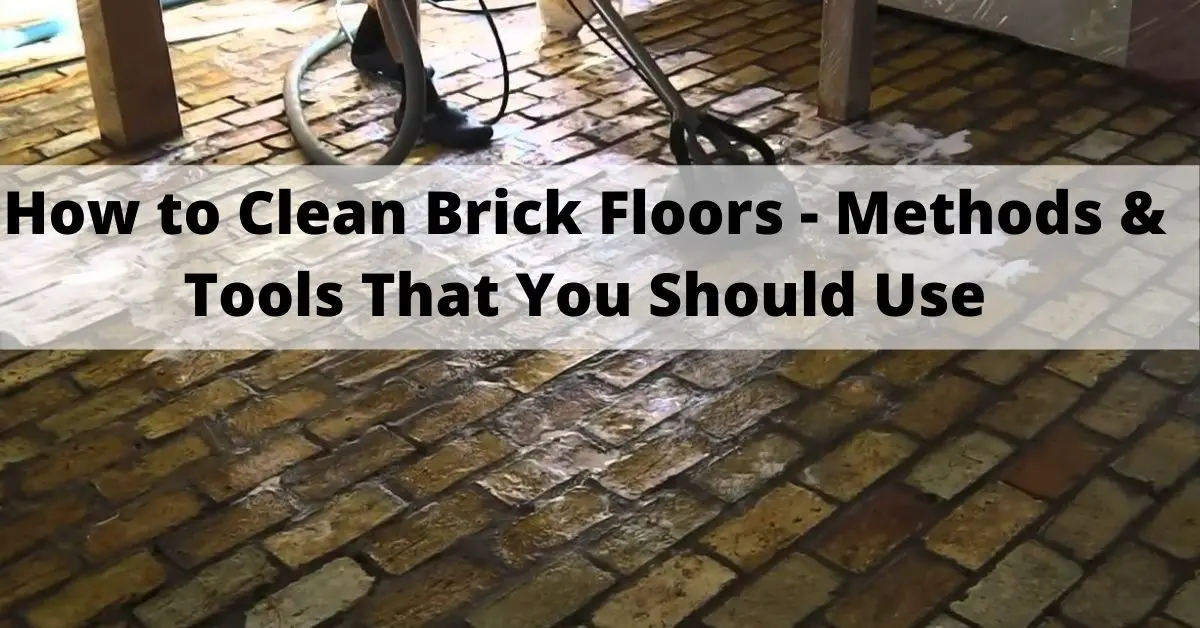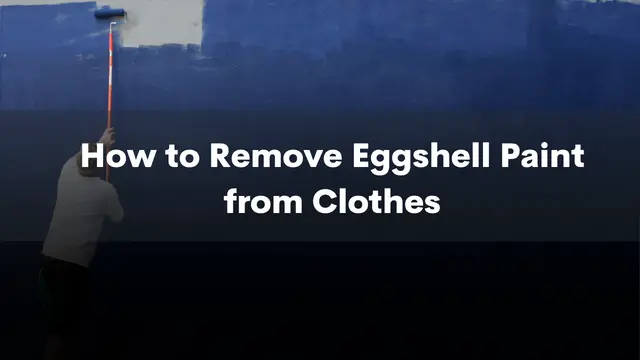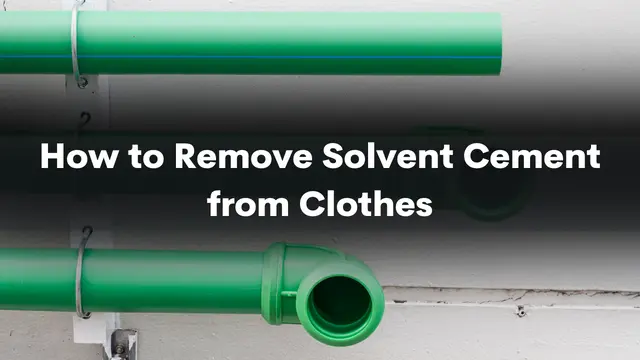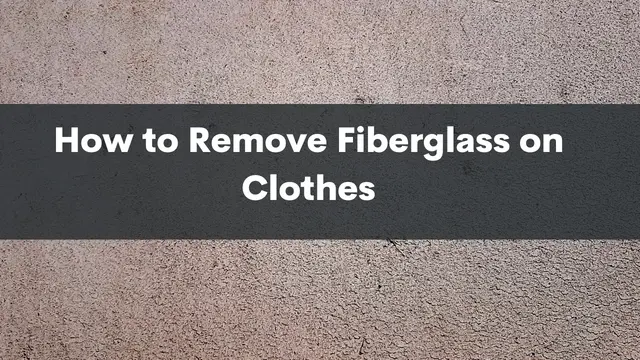Brick floors, despite their commendable qualities, aren’t as popular as other floor types. One of the main reasons for that is because not many people know how to clean brick floors.
Is cleaning brick floors that complicated? No, it isn’t. Some people would say it isn’t that easy. If you fall into that group, you’ll be glad to read some of the methods you can use to tidy up brick floors.
Before we get to that,
Contents
Why Choose A Brick Floor for Your House?
Firstly, brick floors are highly durable. You can find ancient brick buildings still standing to date if you visit any old city. The kind of brick used for flooring might, at times, have some iron added to its composition to boost its durability.
Secondly, brick floors are relatively easy to clean. All you need is a mop, water, and some soap or detergent. It is easy to clean since it is rugged and doesn’t require any unique cleaning methods, unlike some delicate floor types.
Brick flooring can be highly attractive and add beauty to a home. Just check online and see some of the designs for brick floors. You might fall in love with the style and attractiveness they give a house.
Brick floors are also relatively cheaper than several other floor types. For instance, try comparing a marble floor with a brick floor, and you’ll notice how much a brick floor would save you.
However, you will have to add a sealant to prevent stains from easily forming on your brick floor. Also, you probably won’t like the uncomfortable feel of the floor if you are walking barefoot.
Additionally, you will have to bear with your furniture while looking wobbly on the floor, thanks to the uneven brick floors. A carpet would, however, help you solve that
With that out of the way, let us get on with how you’d go about cleaning a brick floor.
Methods on How to Clean Brick Floors
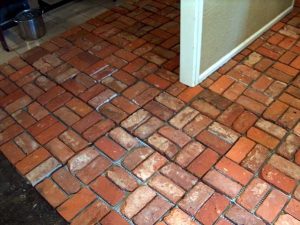
1. Sweep or Vacuum the Brick Floor Regularly
For brick floors to maintain their look, you have to sweep them or use a vacuum regularly. A regular broom would remove most of the dirt on the floor with relative ease. It would help if you gave special attention to the brick’s mortar as it tends to hide lots of dirt.
A broom wouldn’t, however, be as efficient as a vacuum. Especially a vacuum designed specifically to clean hard floors. A proper vacuum would use its brush roll to remove any dirt hidden between the brick’s mortar and get rid of any pet hair.
Remember to use a vacuum without a beater bar to avoid damaging the floor with the vacuum’s beater bar’s constant rolling. The beater bar will also damage the seal if you have a brick floor with a sealant.
Brick floors, when without a seal, tend to give off a lot of grit in high-traffic areas. Regular sweeping and vacuuming will help get rid of the grit.
2. Mopping the Brick Floor
Mopping is a relatively efficient way to eliminate dirt and dust of different floor types, more so brick floors. You can follow the below simple steps to mop your brick floor.
Step 1
Before mopping the floor, you must get rid of any loose dirt and dust. A broom or a vacuum would quickly get rid of such dirt. Sweeping the floor with a broom is also an option.
Step 2
Choose a suitable commercial brick floor cleaner. Mild alkaline cleaners would be your best option as acid-based cleaners can damage brick floors.
You can also use some readily available home remedies such as vinegar, baking soda, or borax.
Step 3
If you are using a commercial cleaner, mix with water according to the instructions. Such cleaners usually come with guidelines on the proper amount to mix with water.
If you decide to go the home remedy way, you’d have to follow specific measurements for each remedy.
Vinegar, for instance, will require you to mix half a cupful with a gallon of water. Baking soda and two tablespoons and a gallon of water will do just fine. The same goes for borax.
In the case of baking soda and borax, you’d have to stir and mix with the water well. The home remedies are alkaline-based and wouldn’t have any disastrous consequences for your brick floor.
Step 4
With the water and the cleaning agents appropriately mixed, you can now proceed and mop the floor. A simple mop would do. You can even use a rug to clean.
Just ensure you don’t use a wet mop. Wring out most of the water from the mop to make it damp.
Also, remember to forcefully move the mop over the tiny crevices typical of brick floors. You mop like you would any other floor type.
Sponge mops and flat cloth mops wouldn’t last when cleaning brick floors over and over. Microfiber-based mops are your best bet here. You can eliminate stubborn stains with a stiff brush.
Step 5
Thoroughly dry the floor with the help of a dry towel or cloth. The leftover water can be a problem, especially when it gets into the crevices between the bricks. You thus have to ensure the floor is thoroughly dry.
3. Using Steam Cleaners on Brick Floors
If you don’t own a steam cleaner, you must at least hear how efficient it can be. Steam cleaners can clean a variety of surfaces from the kitchen counter to different floor types.
Steam cleaners can also work with excellent efficiency on brick floors. The steam gets into the grout lines and eliminates any dust that might lurk there.
If you are looking to add a sealant to your brick floor, consider steam cleaning first.
How Do I Deal with Grout Lines?
The grout lines are one of the most sensitive parts of a brick floor. That is because grout being absorbent, absorbs most liquids that might pour onto the brick floor. As a result, the lines might easily discolor or damage the bricks.
The best way to avoid all this is to add a sealant on the grout lines. The sealant will prevent the grout lines from absorbing liquids from spills and preserve the beauty of the brick flooring.
You can easily get rid of stains that form on grout lines using a commercial cleaner. Mix a little of it with water, then scrub the stains off the grout lines.
A steam cleaner can also come in handy when you have stains and dirt on grout lines. However, you would have to be careful as it could damage the grout, and you’d have to replace it.
How Does One Clean Outdoor Brick Floors?
A brick patio adds a new dimension of beauty that blends exceptionally with the garden’s green nature. Such a patio would, however, tend to get dirty as it faces all the weather elements.
So how do you clean such a floor? A pressure cleaner would come in handy here. With a pressure cleaner, you can easily remove all the dirt stuck on the brick patio.
Adding a detergent to the pressure washer will further increase the efficiency with which it cleans off the dirt. You must, however, be gentle with the pressure washer to avoid it damaging the brick flooring.
To further protect the bricks from the pressure washers’ power, you can give one-line sprayers a wide berth instead of using a fan or flat nozzles. Flat nozzles are gentler on brick flooring.
- 🔫 Electric Pressure Washer🌟 Powerful 1800-Watt motor…
- 🔫 4 Nozzles for Different Pressure🌟 4 Interchangeable…
- 🔫 Automatic Total Stop System🌟 This pressure washer…
Last update on 2024-07-16 / Affiliate links / Images from Amazon Product Advertising API
Is Sealing My Brick Floor Worth it?
Brick, by nature, is usually porous. It can therefore absorb lots of liquids from spills and other sources. Such brick floors can also, at times, feel gritty under someone’s feet. You’d therefore have to use a sealant to avoid some of these issues.
If you want a sealant for your brick floor, you have two options to choose from. The first is the sealant that penetrates the brick flooring and blocks all the pores. The floor can, therefore, no longer absorb any other liquids.
The other type of sealant covers the brick floor in a film like coating resistant to staining and water. Therefore, water spills or any other liquids can’t get into the brick flooring and cause damage.
The film coating also ensures easier cleaning since dirt and dust will usually be on the surface. Simple sweeping the floor will get rid of most of the dirt.
So, yes, sealing your brick floor is worth it.
Important Point to Remember
- Regular cleaning of your brick floor is the surest way to maintain its look and luster. Follow the methods we have discussed, and your brick floor will serve you for a long time to come.
- When choosing a sealant for your brick floor, do pay attention to the color of the sealant. Some sealants tend to change the look of the brick flooring over time.
Read Also: How to Keep a Pool Clean Without a Pump
FAQ About How to Clean Brick Floors
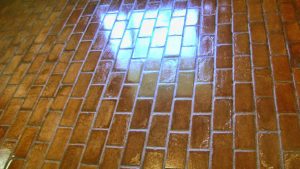
Is cleaning brick floors complicated?
No, it isn’t. From what we have discussed, you can see that it is relatively easy.
What’s the best way to clean a brick floor before adding a sealant?
using a steam cleaner removes nearly all the dirt and dust on a brick floor. That is why most experts would recommend steam cleaning before adding a sealant.
Won’t vinegar destroy my brick flooring?
If you get the mixture with water right, you won’t have to worry about vinegar harming your brick floor.
Read Also: Can You Use A Carpet Cleaner on Tile Floors
Final Thoughts
We hope our guidelines on how to clean brick floors help you preserve your brick floor for a longer time.
If you were looking to try out brick floors but were afraid of how hard they are to clean, we hope we have allayed your fears.
Relevant Resources:
- Top 9 Best Vacuum For Luxury Vinyl Plank Floors
- 11 Best Vacuum for Concrete Floors
- Best Vacuums Without Beater Bar
- Top 7 Best Vacuum For House Cleaning Business
- 7 Best Vacuum With Retractable Cord
- Top 11 Best Lightweight Vacuum Cleaner for Elderly
- Top 5 Best Central Vacuum System for Pet Hair
- Top 9 Best Vacuum for Fleas Reviews & Buying Guides
- 5 Best Walk Behind Leaf Vacuum Mulcher
- Top 7 Best Commercial Leaf Vacuum Reviews
- 7 Best Cordless Backpack Vacuum Cleaner
- Top 7 Best Garage Vacuum Wall Mounted
- Top 5 Best Shop Vac for Drywall Dust
